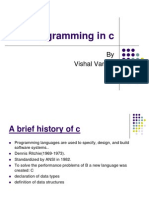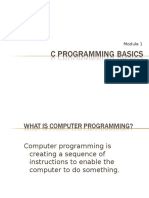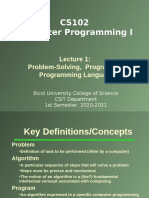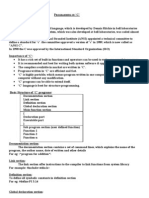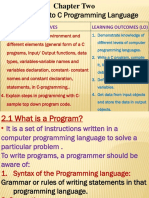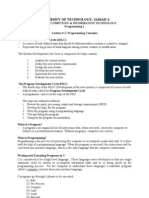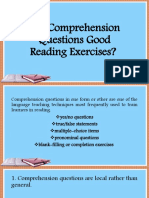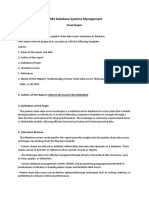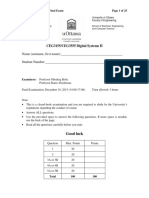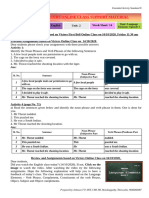0% found this document useful (0 votes)
7 views13 pagesC Notes
The document provides an overview of computer programming, focusing on the C programming language, its history, syntax, and key concepts such as variables, data types, and control structures. It explains the roles of compilers, loaders, and linkers in the programming process, as well as the importance of syntax and semantic errors. Additionally, it covers various programming constructs including loops, conditional statements, and the use of header files.
Uploaded by
adititomar219Copyright
© © All Rights Reserved
We take content rights seriously. If you suspect this is your content, claim it here.
Available Formats
Download as PDF, TXT or read online on Scribd
0% found this document useful (0 votes)
7 views13 pagesC Notes
The document provides an overview of computer programming, focusing on the C programming language, its history, syntax, and key concepts such as variables, data types, and control structures. It explains the roles of compilers, loaders, and linkers in the programming process, as well as the importance of syntax and semantic errors. Additionally, it covers various programming constructs including loops, conditional statements, and the use of header files.
Uploaded by
adititomar219Copyright
© © All Rights Reserved
We take content rights seriously. If you suspect this is your content, claim it here.
Available Formats
Download as PDF, TXT or read online on Scribd
/ 13








